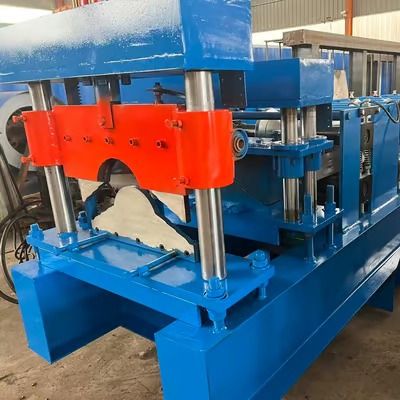What is a Roller Forming Machine?
A roller forming machine is a versatile piece of equipment used in various industries for shaping metal into different profiles. It utilizes a series of rollers to gradually bend or form metal sheets, strips, or tubes into the desired shape. This process is commonly used in manufacturing industries such as automotive, aerospace, construction, and more. Roller forming machines offer high precision and efficiency, making them an essential tool in modern metal fabrication.
The Working Principle of a Roller Forming Machine
Roller forming machines work on the principle of gradual bending. The metal material is fed through a series of rollers, each with a specific diameter and profile. As the metal passes through the rollers, it undergoes continuous bending and shaping until it reaches the desired form. The rollers can be adjusted to achieve different bending angles, radii, and shapes. The entire process is automated, ensuring consistent and accurate results.
Advantages of Roller Forming Machines
Roller forming machines offer several advantages over traditional metal forming methods. Here are some key benefits:
- High Precision: Roller forming machines provide excellent precision and repeatability, ensuring consistent product quality.
- Increased Efficiency: The automated nature of roller forming machines allows for high production rates and shorter lead times.
- Flexibility: These machines can handle a wide range of materials, including steel, aluminum, copper, and more, making them versatile for various applications.
- Cost-Effective: Roller forming eliminates the need for secondary operations, reducing overall production costs.
- Complex Profiles: With the ability to form complex shapes and profiles, roller forming machines open up new design possibilities.
Applications of Roller Forming Machines
Roller forming machines find extensive use in numerous industries. Here are some common applications:
- Automotive Industry: Roller forming is used to produce automotive components such as chassis frames, seat rails, and exhaust systems.
- Aerospace Industry: Aircraft parts like wing ribs, fuselage sections, and engine components can be efficiently manufactured using roller forming machines.
- Construction Industry: Roller forming is utilized to create metal profiles for building structures, including window frames, door frames, and roofing elements.
- Appliance Manufacturing: Roller forming machines are employed to fabricate various household appliance parts, such as refrigerator shelves, oven racks, and washing machine components.
Factors to Consider When Choosing a Roller Forming Machine
When selecting a roller forming machine for your specific needs, there are several factors to consider:
- Material Compatibility: Ensure that the machine is capable of handling the type and thickness of metal you will be working with.
- Machine Size and Capacity: Consider the maximum width and length of material that the machine can accommodate, as well as its bending capacity.
- Roller Configuration: Different roller configurations allow for different bending capabilities, so choose one that aligns with your desired shapes and profiles.
- Automation and Control: Look for features like programmable controls and automation options to optimize productivity and ease of use.
- Quality and Durability: Ensure that the machine is built with high-quality materials and components to guarantee long-term reliability.
Maintenance and Safety Tips for Roller Forming Machines
Proper maintenance and safety precautions are crucial to ensure the optimal performance and longevity of your roller forming machine. Here are some tips:
- Regular Lubrication: Keep the machine's moving parts properly lubricated to minimize friction and prevent wear.
- Inspect and Clean: Regularly inspect the machine for any signs of damage or excessive debris, and clean it accordingly.
- Operator Training: Provide thorough training to machine operators to ensure they understand the correct operating procedures and safety protocols.
- Protective Gear: Operators should wear appropriate personal protective equipment (PPE) such as gloves, safety glasses, and ear protection.
- Emergency Stop: Ensure that the machine is equipped with an easily accessible emergency stop button for immediate shutdown in case of any issue.
Future Trends in Roller Forming Technology
The roller forming industry is constantly evolving, driven by technological advancements and changing market demands. Here are some future trends to watch out for:
- Advanced Automation: Roller forming machines will become even more automated, incorporating artificial intelligence and robotics for increased efficiency and productivity.
- Integration with CAD/CAM Software: Seamless integration between roller forming machines and computer-aided design (CAD) or computer-aided manufacturing (CAM) software will streamline the production process.
- Environmentally Friendly Solutions: The development of eco-friendly lubricants, energy-efficient components, and recycled materials will contribute to more sustainable roller forming practices.

